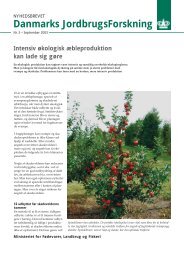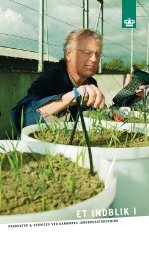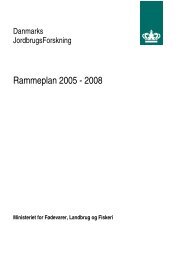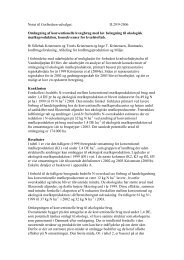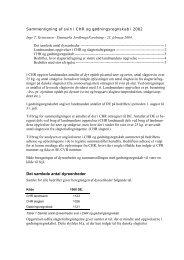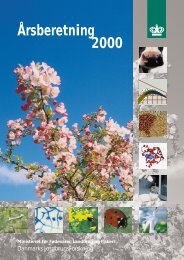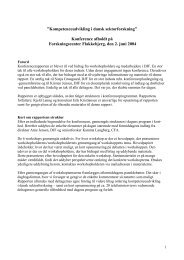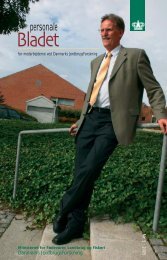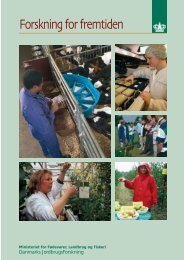Reproduction performances and conditions of group-housed non ...
Reproduction performances and conditions of group-housed non ...
Reproduction performances and conditions of group-housed non ...
Create successful ePaper yourself
Turn your PDF publications into a flip-book with our unique Google optimized e-Paper software.
- How does <strong>group</strong> housing vary in practice? -<br />
Figure 3. Electronic Sow Feeding with small (left) or large ‘nests’ (photos: L.U. Hansen).<br />
How are the different layout related factors combined?<br />
Group feeding is usually combined with small <strong>group</strong> sizes e.g. six to 20 sows per <strong>group</strong><br />
(own observations) <strong>and</strong> stable <strong>group</strong>s. In opposite, ESF <strong>and</strong> fitmix are <strong>of</strong>ten equal to dynamic<br />
<strong>group</strong>s <strong>and</strong> large <strong>group</strong> sizes e.g. from 50 to 150 sows per <strong>group</strong> (Nielsen et al.,<br />
2000). The feeding procedures FAFS <strong>and</strong> IFS are frequently combined with stable <strong>group</strong>s<br />
with <strong>group</strong> sizes that vary from 6 to 50 sows per <strong>group</strong>; however, it may also be combined<br />
with larger dynamic <strong>group</strong>s (Nielsen et al., 2000). Each <strong>of</strong> the above mentioned feeding<br />
procedures may be combined with each <strong>of</strong> the above mentioned floor types.<br />
Concluding remarks<br />
Group housing <strong>of</strong> <strong>non</strong>-lactating sows in practice is not a well-defined system but varies in a<br />
number <strong>of</strong> ways in respect to housing <strong>conditions</strong>. This variation may influence the possibilities<br />
<strong>of</strong> the sows to cope in the system <strong>and</strong> further affect which management options that<br />
can be taken in order to obtain a good reproduction performance.<br />
References<br />
Brouns, F., Edwards, S.A., 1992. Future prospects for housing <strong>of</strong> <strong>non</strong>-lactating sows. Pig News <strong>and</strong> Information<br />
13, 47-50.<br />
Deininger, E. 1998. Beeinflussung der aggressiven Ausein<strong>and</strong>ersetzungen beim gruppieren von abgesetzten<br />
sauen durch das haltungssystem und durch <strong>and</strong>ere massnahmen. Veterinär-medizinischen Fakultet<br />
der Universität Zürich. 120pp.<br />
Edwards, S.A., 1992. Scientific perspectives on loose housing systems for dry sows. Pig Veterinary Journal<br />
28, 40-51.<br />
Fisker, B.N., 1994. Løsgående gruppefodrede søer. Meddelelse 278, L<strong>and</strong>sudvalget for Svin, Den rullende<br />
Afprøvning., 10pp.<br />
18




